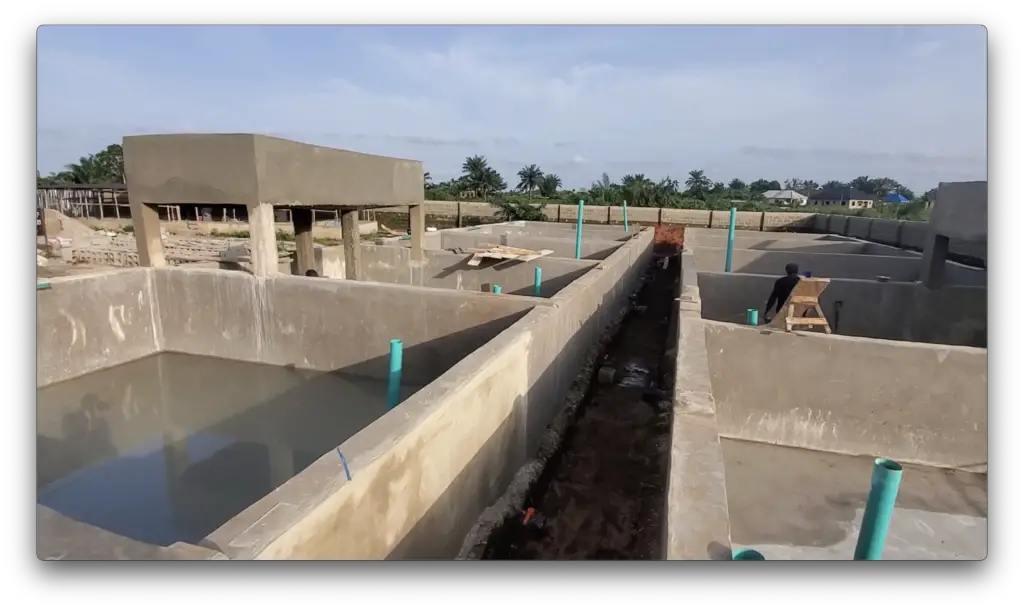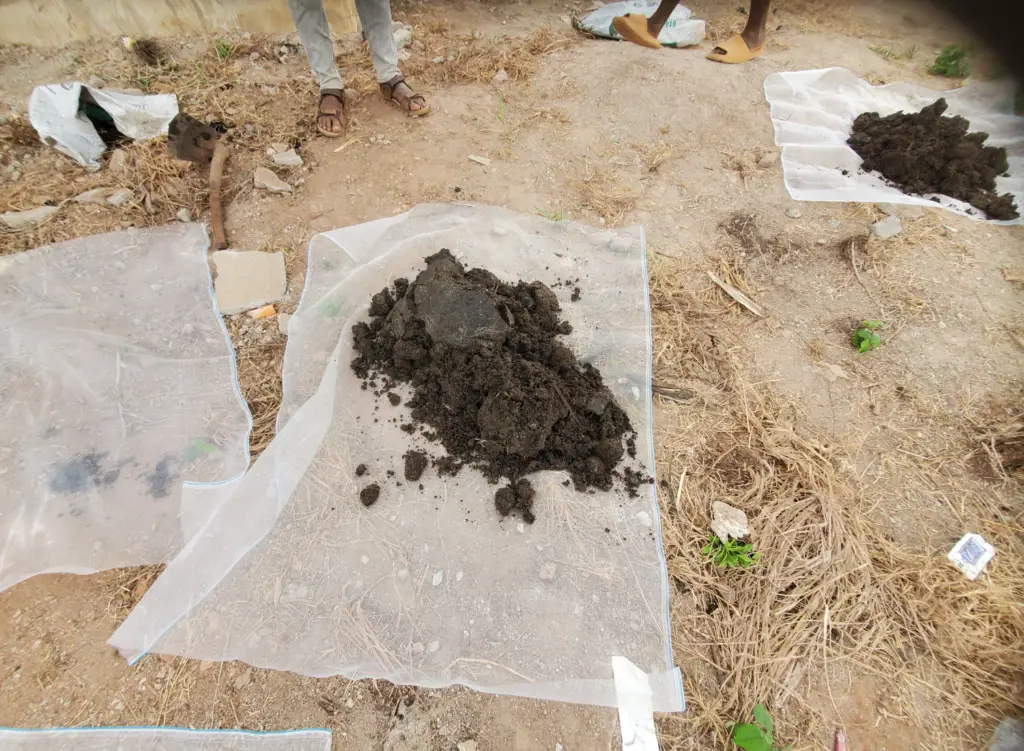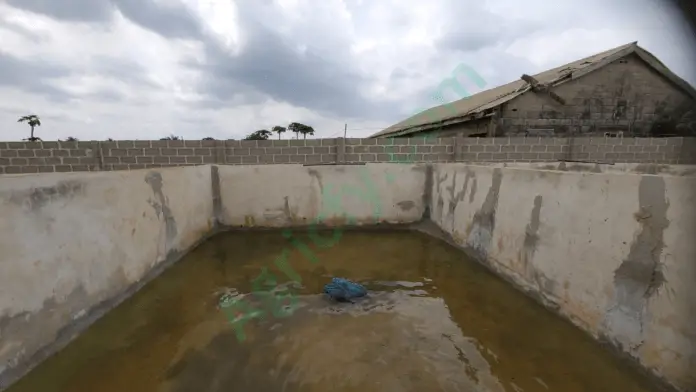Some links on this page may contain affiliate links which means that, if you choose to make a purchase using the link, Agricfy.com may earn a small commission at no extra cost to you. For more information, go to our Affiliate Disclosure Page!
Introduction
Have you just completed a new pond and you’re wondering how to treat a new pond? Well, keep reading you’ll get your answer in this article.
Before you use a newly constructed pond whether a concrete pond, tarpaulin pond, or plastic pond, you need to treat these ponds before stocking your fish.
I’ve been able to construct ponds in different countries and this question keeps popping up, how do I treat my new pond?
There are different ways to treat and clean a pond depending on which type of pond you have.
What Is A Pond?

Before you treat or clean a pond, you need to know what a pond is.
In layman’s terms, a pond is a place or environment where you keep your fish. There are different types of ponds you can keep your fish in, I have an article on this, read it here.
Ways To Treat A New Pond
Congratulations, you’ve decided to start a fish farm and you have your pond ready to use, but you’re wondering how to treat a new pond, I will be sharing with you different ways to treat your pond.
I will be talking more about how to treat a concrete, plastic, and tarpaulin pond more than the earthen pond cos that requires less work to do.
Manure

The first way to treat a pond is by using manure. If you don’t know before, I need you to know that using manure to treat a new pond is one of the best and most effective ways to cure the pond from the effect of cement on your fish if it is a concrete pond.
Three main sources of manure that can be used are chicken waste, pig waste, and cow waste. These three can easily be gotten from a farm around you.
How to Treat Concrete Fish Pond with Manure
To use manure to treat a concrete fish pond, you’ll need a net, rope, and the manure itself.
Pour your animal waste into a net, tie the net very well so the manure does not pour into the pond, place the net into the pond, and fill it with water.
After filling the pond with water, leave the manure for at least one week before disposing of the manure and water.
Doing this will neutralize every germ in the pond and your pond(s) will be ready for use.
I know you’re asking “What quantity of waste should I put into the pond?”
The size of your pond will determine the quantity of chicken/pig/cow waste you’re going to use. I will say use your discretion in doing this.
Banana Leaf or Pawpaw Leaf
The second way to treat a new pond is using banana stems and leave or pawpaw leave.
This is one of the too common ways of treating a newly constructed concrete pond. Cos it seems difficult to get chicken waste in some areas, new farmers go for using banana stem leave and pawpaw leaves to treat their ponds.
How Do You Use A Banana Leaf?
Just like the way you apply manure to the pond, you use the same method only that this time around, you’re not going to need a net to use the banana stem.
Get enough banana or pawpaw leave and stem, put them inside the pond that has some water (up to a quarter of the pond), then top the water till reaches the beam of the pond.
Leave the banana stem in the pond for 2 weeks and then remove it. By doing this, you have neutralized the toxic effect of the cement used in constructing the pond.
As I said before, this method should only be applied to a new concrete pond (that has not been used before or has just been repaired), don’t use it for a tarpaulin or plastic pond.
Chemicals
The third way of treating a newly constructed concrete pond is by using chemicals.
This method is costly and their why a lot of people don’t bother using this method to treat their new pond.
There are different types of chemicals that you can use to treat your ponds. I will not mention anyone cos of misuse and abuse. Ask your consultant about the best type of chemicals for treating a pond.
To use chemicals to treat a new pond, you will need to pour the chemicals into a bowl, pour some water into the bowl with the chemicals and then sprinkle the chemicals into the pond that is quarter-filled with water.
After sprinkling, top the water in the pond to the beam of the pond.
Just like every other medication, there are measurements for using chemicals to treat new or old ponds.
Ask a consultant for advice.
Salt and Soap
The last but not least method to treat your new pond is by using salt and soap.
Don’t yell yet, I know what I’m saying, just read on. If you just finished setting up a new tarpaulin or plastic pond, you don’t need any of the methods mentioned above to treat/cure your pond.
To treat your tarpaulin or plastic pond, buy a soap (bar soap) wash the salt thoroughly, rinse with clean water, and apply industrial salt to the ponds.
I know some people use banana leaves and manure to treat the pond, but that is a waste of resources and time.
Tarpaulin pond is like clothing that just needs washing to be cleaned. For plastic ponds also, all you need for this two is just wash and rinse.
You can call these two types of ponds, a Wash and Use (wash and wear) pond.
Conclusion
Fish farming is interesting, but at the very beginning, you need to put things in place before stocking your fish in the pond.
To recap, the different ways of treating a new pond are:
- Manure
- Banana/Pawpaw Stem and Leaf
- Chemicals
- Salt and Soap
The type of pond you intend to use to stock your fish will determine the method you will apply to treat a new pond. Whichever method you use is fine and it will yield good results if done properly.
You can combine two or three methods together especially if it’s a new pond and you have a large capacity of fish ponds.
If you want to construct a new pond or you need any professional advice, you can use the Contact Us form or send an email to daniel@agricfy.com.
Go out there and make money from this agribusiness. Cheers

